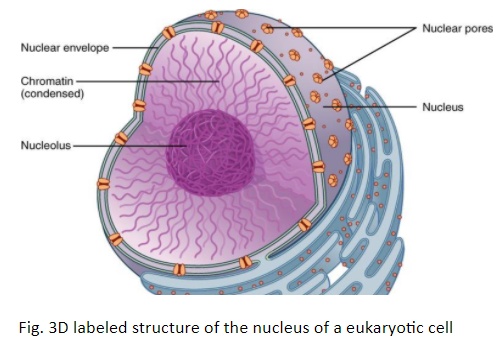
What are Thread-Like Structures?
Thread-like structures that contain genes are called chromosomes. Chromosomes are made up of DNA, a molecule that contains the genetic information for a plant or animal. DNA is organized into threads or strands. Each thread is made up of millions of tiny molecules called nucleotides.
Chromosomes can be found in all plants and animals, but they are especially common in plants. A chromosome typically consists of one long strand of DNA that is twisted around itself like a thread. The ends of the DNA strand are joined together by a piece of protein called a centromere.
Every cell in your body has 24 pairs of chromosomes (22 from your mother and 2 from your father). Each chromosome consists of about 500 million nucleotides. Humans have about 3 billion genetic markers on each chromosome (three hundred million nucleotides).
How Are Thread-Like Structures Contained?
Thread-like structures contain genes and are found in cells, tissues, organs and tumors. They are made up of hundreds or even thousands of DNA strands that twist around each other like beads on a string. This twisting is what gives thread-like structures their name.
The thread-like structure that contains a gene is called a plasmid. Plasmids are tiny pieces of DNA that can move around in cells. They can be helpful for certain types of bacteria to survive in the environment or for scientists to study how genes work.
Some plasmids contain genes that can cause diseases when they get into the wrong part of the body. For example, the flu virus is made up of small pieces of genetic material (called viral RNA). Viruses attach themselves to cells and use their genetic material to make new viruses. One type of virus, the influenza virus, can spread from person to person through contact with respiratory secretions, such as saliva or mucus. When this happens, the flu virus may enter the body through puncture wounds or cuts in the skin surface caused by those secretions. If a person has an infection with the flu virus, they may develop symptoms such as fever, muscle aches, coughing and body pain. The flu virus can also cause pneumonia (a serious lung infection), which kills more people each year than any other disease.
Infection with influenza is particularly dangerous for children because their immune systems are not as strong
What Does This Mean For Gene Therapy?
The threads-like structures that contain genes are called chromosomes. Chromosomes are found in the nucleus of every cell in the body. Each chromosome consists of DNA (deoxyribonucleic acid), which is the genetic code for making proteins.
How Thread-Like Structures Contain Genes
Thread-like structures that contain genes are called chromosomes. Chromosomes are long, thread-like strands of DNA that are organized into sets called bands. Each band contains a single copy of the chromosomal DNA. Chromosomes are found in all organisms, including plants, animals, and viruses.
Chromosomes can be seen under a microscope with a light microscope. When viewed with a light microscope, chromosomes appear as long, thread-like strands of DNA. The strand is twisted together so that the individual strands look like they’re connected by loops. The loops form because each chromosome has two ends – one end is attached to the nucleus of the cell and the other end is attached to another chromosome.
There are 23 pairs of chromosomes in humans. Each human cell has 46 chromosomes – 22 pairs of chromosomes from your mother and 23 pairs from your father. Each chromosome consists of about 200 million base pairs (molecules). A base pair is a unit of genetic information (DNA).
The Role of Thread-Like Structures in the Cell
The thread-like structures that contain genes are called chromosomes. Chromosomes are held together by threads called DNA strands. DNA is a molecule made up of two pieces, the nucleotide base and the phosphate group. The nucleotide base is a sugar and the phosphate group is a mineral.
DNA is like a string of beads. Each bead has a thread on it that can connect to other beads. The thread on one bead can be connected to the thread on another bead by a phosphate group. This lets different parts of the chromosome stay together in the same place.
Chromosomes are shaped like long tubes. The tube is divided into two partscalled arms. Each arm has many copies of the same chromosome. The two parts of the chromosome are called chromatids.
Chromosomes are found in every cell in your body! Most of your genetic information (the stuff that makes you who you are) is located on chromosomes
What Lies Ahead for Thread-Like Structures
There are many different structures within our cells that share some common features, including thread-like structures that contain genes. These structures are often called chromosomes, though they can also be found in other types of cells. Chromosomes are made up of DNA, which is the genetic material that encodes the instructions for making proteins.
Chromosomes have a long history with humans and other animals. They were first discovered in 1869 by a scientist named Karl von Linné. Linné observed that certain plants had similar structures scattered throughout their cells. He named these structures chromosomes after the Greek word for ladder, because they looked like long strings of beads.
Over the years, scientists have learned a lot about chromosomes and how they work. For example, we now know that chromosomes can break and recombine during replication. This process ensures that each cell has an accurate copy of the genetic information contained within them. Additionally, chromosomes play an important role in gene expression: when certain genes are turned on or off, this can affect what type of protein is produced by a cell.
Conclusion
The thread-like structures that contain our genes are called chromosomes. Chromosomes are made up of DNA, which is the genetic material that dictates how we look and behave. Each one of our cells contains 23 pairs of chromosomes, which are wrapped around each other in a spiral pattern.


